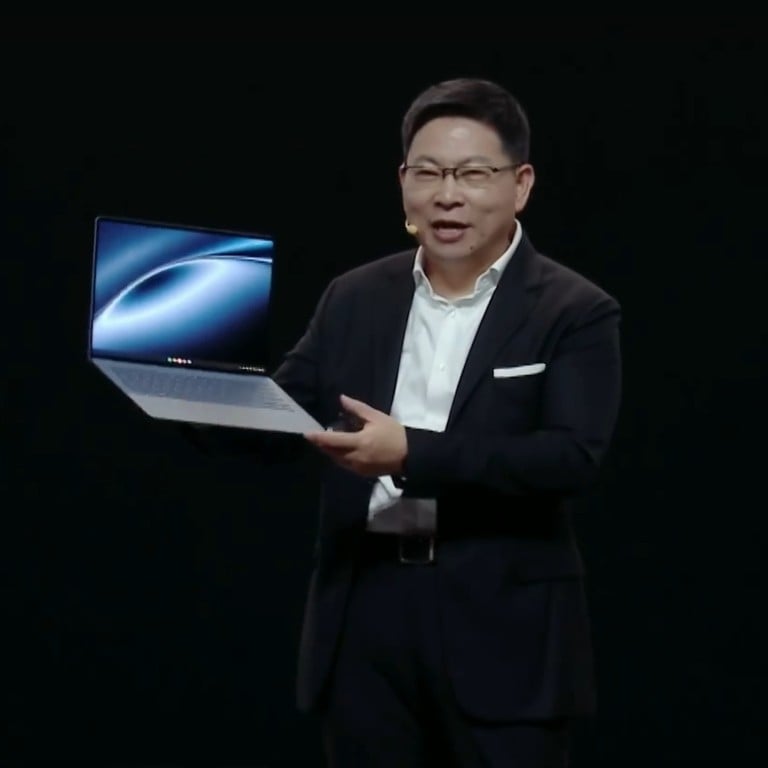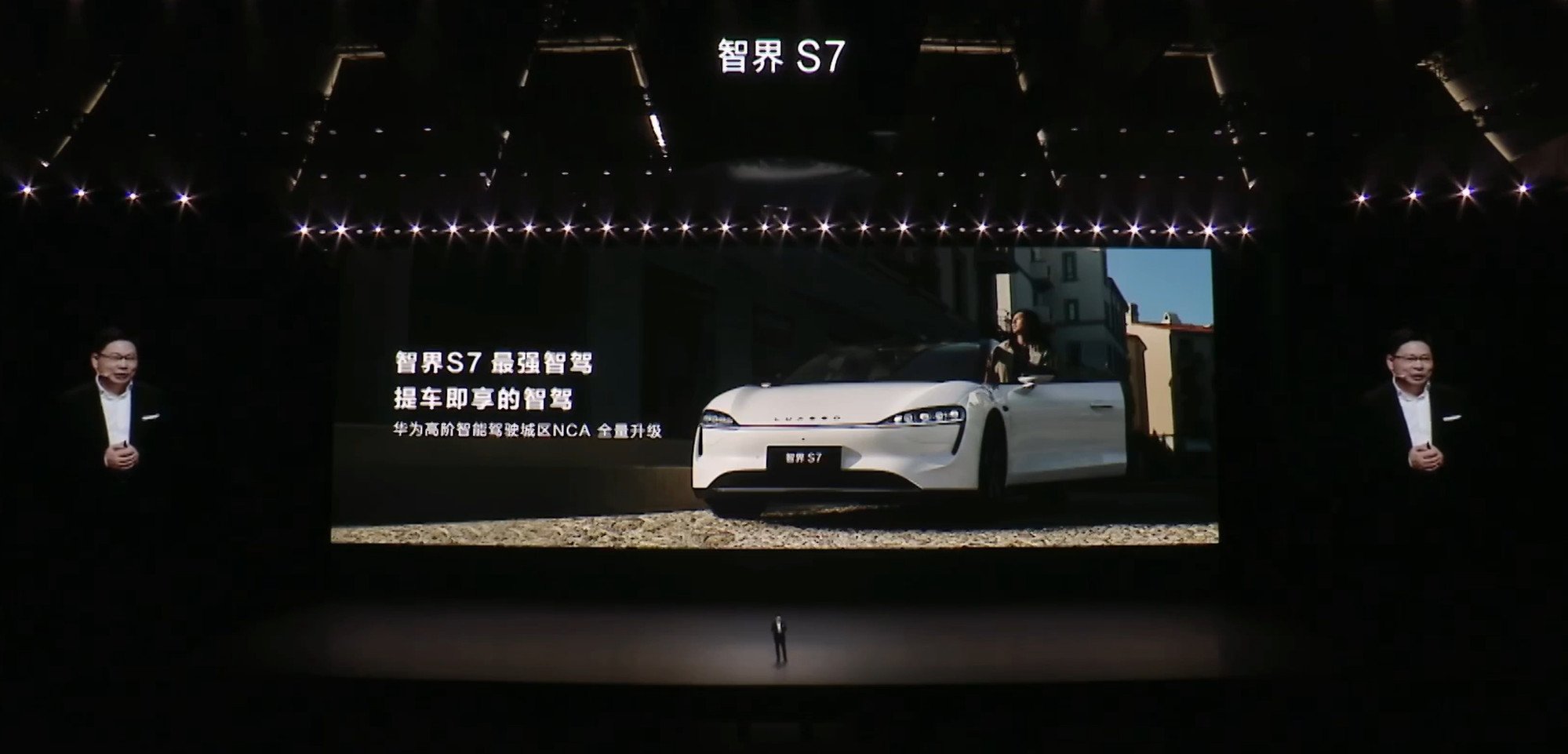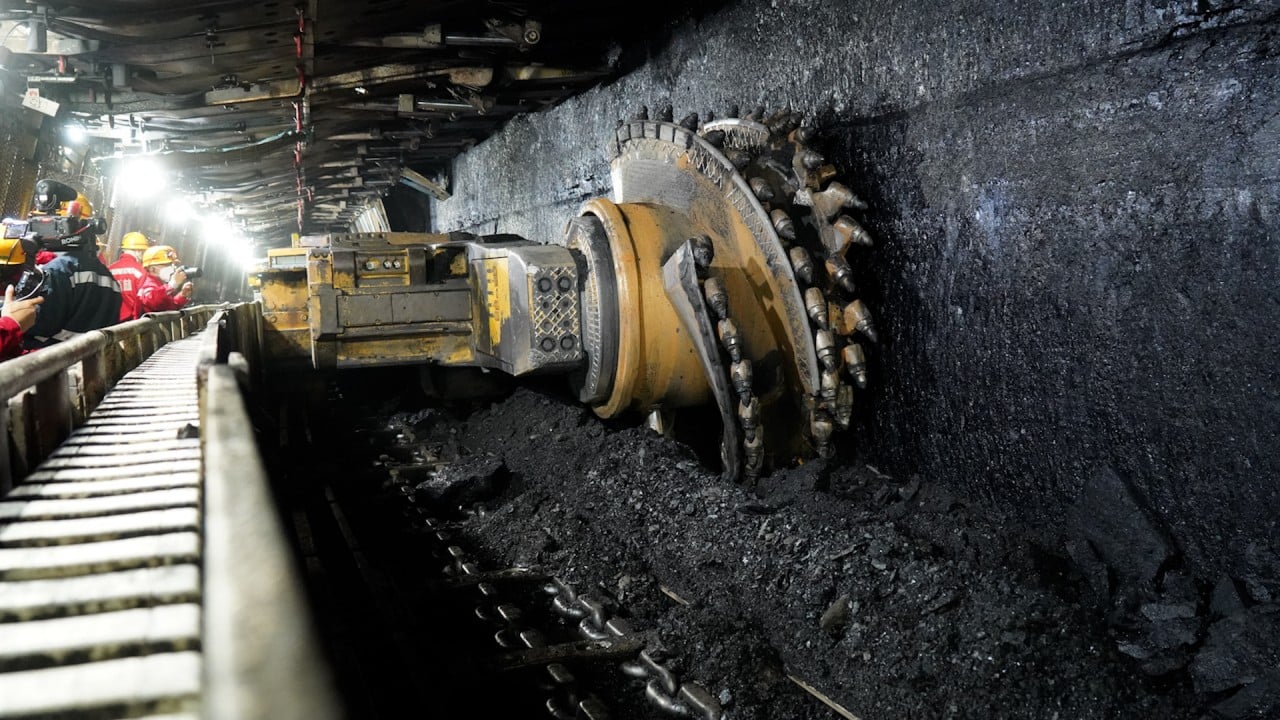
Huawei has a new car and PC, but no P70 smartphone as people await next big launch after Mate 60
- Huawei said it has fixed supply issues for its Luxeed S7 EV, which now comes with advanced driver assistance, and announced its first PC with AI built in
- The industry is awaiting an announcement for the P70 smartphone, after rumours of an imminent launch, since Huawei started using China-made chips
The new version of the Luxeed S7 – the first version of which launched in November and has since faced shipping delays – comes with functionalities that include Huawei’s self-developed advanced driver assistance system.
Yu also revealed that Huawei’s Aito brand, co-developed with Chinese carmaker Seres, has received 174,000 orders for its M7 SUV in the seven months since its launch.

The computer runs on the Intel Core Ultra 9 185H, part of the US chip giant’s latest generation of processors that include a neural processing unit for AI functionality.
However, there was no mention at the event of any new smartphone products. Huawei fans have been anticipating an announcement for the P70 series since rumours of an imminent launch spread online last week. Huawei did not respond to a request for comment on the status of the phone on Thursday.
Huawei was added to a US trade blacklist in May 2019, forcing the former smartphone leader to skip some planned product launches, severely hobbling its once-lucrative handset business. However, Huawei announced last year that it would resume launches for its flagship smartphone brands, the Mate and P series.
The Shenzhen-based company has traditionally unveiled new flagship gadgets at its major spring and fall launch events. But last August, the giant quietly released what was its first 5G handset in three years, without any advance notice. It did not introduce the Mate 60 at later events, either, maintaining strict silence on the origin of its chipset.
While the Mate series targets working professionals, the P series is aimed at younger users, with a greater focus on camera functionality. The P60 Pro, which launched in March last year, was a 4G phone running on Qualcomm’s Snapdragon 8+ Gen 1 chipset and Huawei’s HarmonyOS operating system.
HarmonyOS has seen accelerated native development since the company started preparing changes that will break its compatibility with Android apps. It now has more than 4,000 native apps in the ecosystem, Yu said at the Thursday event.
HarmonyOS Next, which removes core Android code, will be ready for a beta release in June, Yu added.


